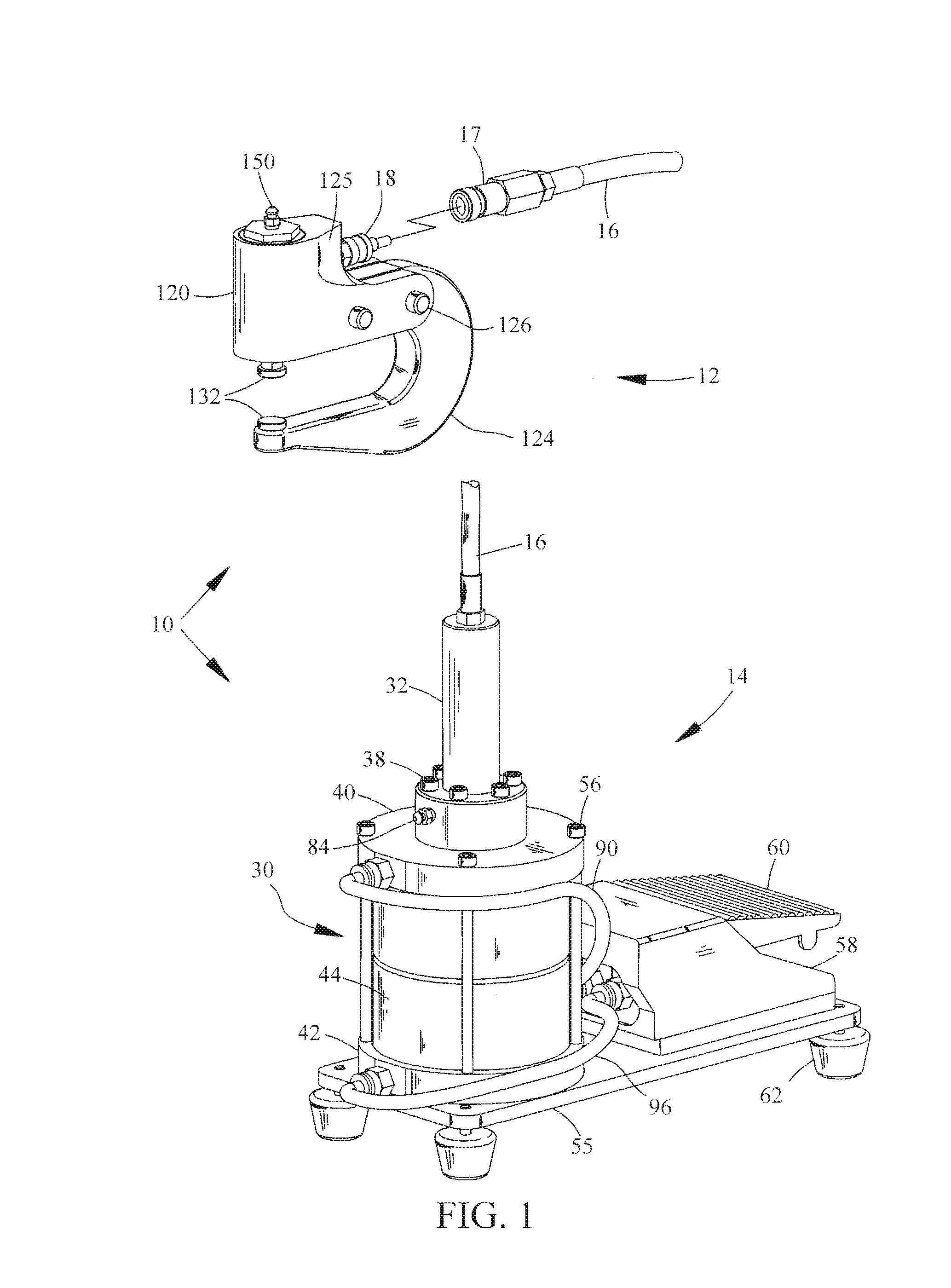Hydropneumatic riveter
a riveter and hydropneumatic technology, applied in the direction of manufacturing tools, forging press details, forging presses, etc., can solve the problems of inability to access tightly confined areas such as internal wing structures, inability to access some confined structural areas, and relatively heavy units for operators to hold, so as to reduce the size and weight of the forming portion, the effect of high compactness and light weigh
- Summary
- Abstract
- Description
- Claims
- Application Information
AI Technical Summary
Benefits of technology
Problems solved by technology
Method used
Image
Examples
Embodiment Construction
[0027]According to a preferred embodiment of the invention, there is described a hydropneumatic riveter having features that allow for a more compact size, lower weight, consistent force and greater versatility. Referring to FIG. 1, a hydropneumatic riveter 10 can be generally divided into two main sub-assemblies; a forming head 12 and a pressure intensifier 14. The forming head 12 shown in FIG. 1 is a C-yoke type, so named due to the shape of the anvil which forms the rivet. The two sub-assemblies are interconnected via a flexible wire-braided reinforced conduit 16, which may comprise a fluid-tight female quick disconnect 17. The conduit 16 is generally permanently attached to the pressure intensifier 14, but could alternately be permanently attached to the forming head 12. The forming head 12 may likewise comprise a fluid-tight male quick disconnect 18, for selectively coupling and uncoupling the forming head 12 from the conduit 16 attached to the pressure intensifier 14. The cond...
PUM
| Property | Measurement | Unit |
|---|---|---|
| pressure | aaaaa | aaaaa |
| weight | aaaaa | aaaaa |
| force | aaaaa | aaaaa |
Abstract
Description
Claims
Application Information
 Login to View More
Login to View More - R&D
- Intellectual Property
- Life Sciences
- Materials
- Tech Scout
- Unparalleled Data Quality
- Higher Quality Content
- 60% Fewer Hallucinations
Browse by: Latest US Patents, China's latest patents, Technical Efficacy Thesaurus, Application Domain, Technology Topic, Popular Technical Reports.
© 2025 PatSnap. All rights reserved.Legal|Privacy policy|Modern Slavery Act Transparency Statement|Sitemap|About US| Contact US: help@patsnap.com



